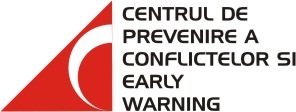Until a while ago, we were used to a simple, dual economic classification of countries, inherited from the Cold War: developed countries and developing countries (originally “less developed,” but the phrase was pejorative so it was improved). Socialist countries in the Eastern bloc claimed to be developed, which, after category A (developed) led to a category B (special), and then the Latin-American bloc was formed among the 75 (the group of developing countries, in excess of 120).
But a new phenomenon is noted after 1990. Four countries (South Korea, Singapore, Hong Kong and Taiwan) make the leap from the developing category so suddenly, totally and unexpectedly that they are dubbed “the little dragons.” They are all Asian, three of them have mostly Chinese populations, they are all bordered by sea (islands or peninsulas), they are small rather than big.
It was with less dynamism, more slowly but also more massively that a group of another 26 states moved with equally unrelenting ambition towards a massive departure from the “developing” category. They were called emergent. Some call them “emergent markets,” but as we will see the new label is attached to states, domestic and foreign policies, state reserves. They are China, India, Indonesia, Malaysia, Pakistan and the Philippines in Asia; Argentina, Brazil, Chile, Columbia, Mexico, Peru, Venezuela in Latin America; Egypt, Israel, Jordan, Morocco, Saudi Arabia, South Africa in Africa and the Middle East; Russia, the Czech Republic, Hungary, Poland and Turkey in Europe. We add these 26 to the 4 dragons and we get 30. We cannot overlook (as statistics do) the Gulf states, whose indices outperform those of the emergent countries: Kuwait, Bahrain, Qatar, UAE and Oman. So we get 35, as against the “developed” group, which according to the IMF is 23-strong: Australia, Japan, New Zeeland, Canada, SUA, Austria, Belgium, Switzerland, Denmark, Spain, Finland, France, UK, Germany, Greece, Ireland, Iceland, Italy, Luxemburg, the Netherlands, Norway, Portugal and Sweden.
So the image we use as a starting point is as follows: about 23 developed countries, about 35 emerging ones and some 110 developing ones (170 minus the former categories). The classification method used by “The Economist” magazine in its “Emerging Markets” section does not necessarily overlap other views on the economic world. A recent IMF study (WP/07/280) uses another pattern: 23 countries in the developed North, 23 in the emerging South, 60 in the developing South, which are separated from the broader group as the time of emergence has not yet come. This approach overlooks Europe altogether.
We will take a brief look, from the perspective of average readers (rather than expert researchers) at the strange group of the “emerging.” What sets them apart? 1) a high GDP growth rate. In two-thirds of these states, the economic growth rate is 5-9%, with China’s 10% rate as the unchallenged and constant champion. 2) a high industrial output growth rate; again, two-thirds of these states boast 5-15% rates; 3) substantial financial reserves: apart from China and its trillion (one thousand billion USD), three have over 200 billion USD and three have more than 100 billion, five have over 50 billion, and the others have comfortable reserves.
The Asian emerging states stand apart in their growth rates; according to IMF forecasts, in the next five years they will grow by an average 8%, as against the Latin-Americans with 4%.
It is critical to identify another common feature of emergent states, which precedes and triggers growth: the massive investment in research-development (R/D), in education and sound training of professionals, beginning with the industrial sector.
Developed countries take particular pride in their multinational corporations. The emerging ones do not shy from opening this chapter either. A Boston-based study group drew up a list of multinationals in emerging countries, and counted as many as 100. The criteria were strict, starting with revenues of at least 1 billion in 2006; obviously, some 40 of the corporations in the list are Chinese. There are giants as well. China hosts the world’s largest nickel-cadmium battery production facility, and India the largest polyester fibre and yarn industry in the world. Emergent countries are looking for partners. In 2007 they acquired approx. 171 billion USD worth of assets in rich countries.
One topic which has caught attention over the past three years is the “sovereign funds,” which are public reserves in emerging states. No one blinks when it comes to private foreign investments, but when they are made by state-owned sources, questions arise. The amounts available are huge: 2,900 billion (29 sovereign funds); concerns have to do with the economic and possibly political intentions that have brought such funds into the Western market. Major American financial centres like Merrill Lynch and Citigroup benefited from 6.6 billion USD and 14.5 billion USD respectively, coming from Asian and Middle Eastern sources. Sometimes sovereign funds are competing with each other. The same Western company or bank may simultaneously be subject to bids from China, Singapore and Dubai. These secret and perhaps manipulative funds set working not only when requested to, but also when a company puts stocks and bonds in the market. In one case, a Chinese fund contributed 3 billion from its own funds to the consolidation of an American firm.
Western governments have put their Liberalism aside and are beginning to react negatively to these transactions that enjoy market freedom. Thus, the bid of a Chinese oil company for a Californian oil company was rejected; the same happened when a port operator in Dubai sought to take over the American terminals in New York and New Jersey.
The dynamism of the emerging states, which go with the globalisation flow, exceeds their borders and broadens its coverage. Observers of the phenomenon remember with some bitterness and concern what people said after the gunboats of Commodore Perry’s fleet made the Japanese give up their isolation policy in mid-19th Century: “We’ve opened the door for us to get in, and they used it to get out.”
The upshot of an emerging economy, Mr. Mittal finds India too small for the development of a family steel business and leaves for Indonesia, where he thrives “under the nose of the Japanese.” He then connects it to the steel industry in Trinidad, which he buys out. He moves to Mexico, where he acquires two steel companies, then he comes to Eastern Europe, strikes gold in Romania and after this huge international journey he targets a company which he takes over with much fanfare: Arcelor, a flagship company of France.
Even when they don’t travel around the world themselves, owners of large emergent companies collect outstanding achievements. Tata Motors of the Tata Group, India’s largest industrial holding, is launching an automobile to win the South-Eastern Asian market, at the modest price of 2,500 USD. Another company which holds Ranbaxy, one of the world’s leading pharmaceutical companies, looks abroad as it takes over a British tea brand or a Singapore steel company.
Examples are countless. Tata Consulting Services plays in the international IT market. China plans to open automobile plants in Eastern Europe, Latin America and the Middle East. Hong Kong controls half of the global market of small electric engines. Mexico’s Cemex has acquired a large cement group in UK. And Brazil is the third-largest producer of regional jet planes. Two leading foodstuff companies in Brazil export half of their output. China’s Hisense currently sells about 10 million TV sets, 3 million air conditioning units (which sell quite well in France) and operates plants in Algeria, Uruguay, Iran, Pakistan and South Africa.
Where does Romania stand in the triad of countries (developed, developing and emerging)? I shrug: nowhere. One voice in the audience assures me that we’re in Europe now, which is a union of developed countries. It would be great if the “European” certificate covered the economy as well. It may encourage it, though. Three Eastern European member states, just like us, namely the Czech Republic, Poland and Hungary, are rated as emerging in “The Economist” statistics, although they are alongside Slovakia in the list of OECD members. The political status should not be mistaken for the economic one, because it’s others who keep the tabs on this status.
Another question: what are the prospects for emerging countries? Some of them, like South Korea, have leaped into the topmost category (e.g. the number of patents is the fourth largest in the world, after Japan, USA and China, and way ahead of Germany). Others are on the verge of doing so. But together, they all change the economic map of the world. The little dragons were separate occurrences; emergence is a trend. We will soon see the effect of this trend. Let’s choose a date before the 40-year Japanese cycle and see what might happen in 2040. The answer is given by a Nobel Prize winner, the American professor Robert Fogel: a scenario for that year indicates that three large Asian states will account for 54% of the global GDP: China (40%), India (12%), Japan (2%); another six emergent Asian states will contribute a combined 12%: Singapore, Malaysia, Thailand, Hong Kong, South Korea and Taiwan. Which means 66% in all for Asia, i.e. two-thirds of the world’s GDP. This is where the global world’s focal point in wealth, economy, production and trade is moving to.
The Romanian youth care about the future of their country. In the public square, they shouted, Eu-rope! Eu-rope! Will they also use “E-mer-gence! E-mer-gence!” as a rallying cry?
by Mircea MALIŢA









